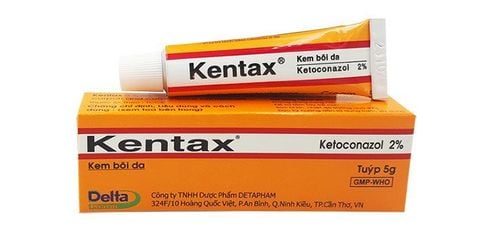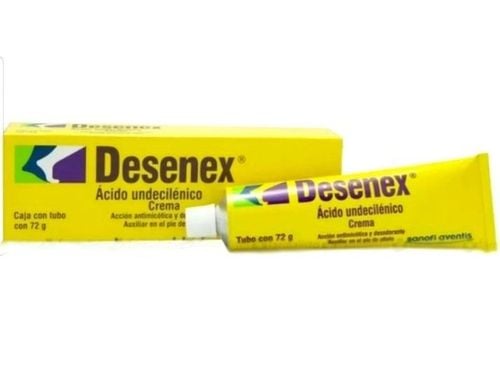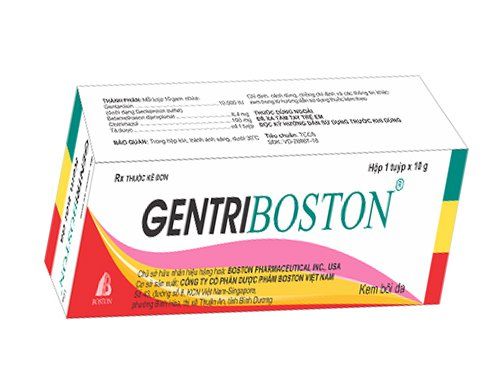This is an automatically translated article.
The drug pharmitrole is used in the treatment of dermatological problems, when the patient is infected with different types of skin fungi. Pharmitrole is used in the form of hard capsules, taking the medicine properly and reasonably will help treat the disease better.
1. What is Pharmitrole?
Pharmitrole includes the ingredient Itraconazole which is produced in the form of capsules with a strength of 100mg. Pharmitrole is a prescription drug for the treatment of fungal skin diseases, ringworm, fungal nail diseases, toenails, ...
2. What is the effect of Pharmitrole?
Specific effects of Pharmitrole are shown in the treatment of the following diseases:
Treatment of candida infections in the mouth - throat or in the vagina. Tinea versicolor, ringworm such as: tinea pedis, inguinal skin, body skin or interstitial skin fungus. Treatment of fungal nail diseases, toenails. Treatment of visceral fungal infections caused by Aspergillus and Candida fungi. In addition, it is also used to treat other fungi such as: Cryptococcus (causes meningitis), Histoplasma, Sporothrix, Paracoccidioides, Blastomyces and other less common local and systemic fungal infections. Maintenance treatment in the case of people with AIDS, helps prevent latent fungal recurrence. Prevention of fungal infections during prolonged neutropenia.
3. Instructions for using Pharmitrole
Pharmitrole is used orally, the dose and duration of the drug depends on the condition of each person. Patients can refer to the dosage of Pharmitrole in the following ways:
Should take the drug immediately after eating, the dose is calculated in 100mg tablets and divided into different doses according to each disease:
For fungal diseases Vulvar-vaginal candidiasis: take 2 tablets (100mg) x 2 times/day and use for 1 day or take 2 tablets x 1 time/day and use for 3 days. Ringworm disease: take 2 tablets x 1 time / day should be used for 7 days. With ringworm can be used as follows:
Take 2 tablets / day, take once a day and use the drug for 7 days or 1 tablet x 1 time / day and use for 15 days. For highly keratinized areas such as in the case of fungal infections on the soles of the feet and palms, it is possible to take 2 tablets x 2 times/day and use for 7 days or 1 tablet x 1 time/day to use within 30 days. day. Candida infections in the mouth - throat: take 1 tablet x 1 time / day for 15 days. In case the patient has AIDS, organ transplant or neutropenia, it is recommended to take 2 tablets x 1 time / day for 15 days. Onychomycosis: usually treat 2-3 oral sessions, each session lasts 7 days, take 4 tablets a day, 2 tablets in the morning, 2 tablets in the afternoon. Treatment sessions are always separated by 3 weeks without medication. Or can be treated continuously taking 2 tablets x 1 time / day for 3 months. Treatment of visceral fungal infections:
Aspergillus infections: take 2 tablets x 1 time/day and use from 2-5 months, if the disease is widespread, the dose can be increased to 2 tablets x 2 times/day. Candida infection: take 1-2 tablets x 1 time/day and use for 3 weeks to 7 months. Cryptococcus Encephalitis: 2 tablets x 1 time/day for 2 months to 1 year Meningitis caused by Cryptococcus: 2 tablets x 2 times/day. Maintenance dose: 2 tablets x 1 time/day. Histoplasma infection: take 2 tablets x 1-2 times/day, average use time within 8 months. Fungal infection Sporothrix schenckii : take 1 tablet x 1 time / day and use for 3 months. Paracoccidioides brasiliensis fungal infection: take 1 tablet x 1 time/day, use within 6 months. Chromomycosis (Cladosporium, Fonsecaea): 1-2 tablets x 1 time / day, used for 6 months. Blastomyces dermatitidis infection: take 1 tablet x 1 time/day or 2 tablets x 2 times/day and use within 6 months. It is necessary to clearly determine the dosage of Pharmitrole indicated on the package and the drug instruction sheet. Or else see your doctor for proper instructions. It is not allowed to arbitrarily take the drug, apply or change the dose of the drug.
In the case of an overdose of Pharmitrole, it is necessary to notify the doctor immediately if any unusual symptoms appear. Immediately go to the nearest medical center for timely treatment. In case of complications due to overdose of Pharmitrole, doctors can apply supportive measures, including gastric lavage with sodium carbonate. Within the first hour after taking the drug, gastric lavage should be performed immediately. Activated charcoal can be used if appropriate.
Usually medicines can be taken in 1-2 hours longer than prescribed in the prescription. Unless there is a strict rule about the duration of use, the drug can be used a few hours after a missed dose has been detected. However, if the time is too far from the time when you need to take it, you should not take it, because it can be dangerous for the body if two doses are taken too close to each other.
4. Possible side effects when taking Pharmitrole
Any medicine when used can cause side effects, the same goes for Pharmitrole. During treatment with Pharmitrole, patients may experience the following side effects:
Causes nausea, abdominal pain, headache and indigestion or digestive disorders. Rarely, allergic reactions such as pruritus, exanthema, urticaria and angioedema, dizziness, menstrual disorders, reversible elevated liver enzymes, congestive heart failure Stevens-Johnson syndrome have been reported. And very rarely hypokalemia.
Usually these side effects go away when the medication is stopped. If there are other rare side effects that are not listed in the leaflet, tell your doctor right away if you suspect any side effects of Pharmitrole.
5. A few notes when using Pharmitrole
Pharmitrole is contraindicated for use in the following cases:
Patients with hypersensitivity to the drug or any of its ingredients. The drug should not be used by pregnant or lactating women. The drug should only be used when visceral fungal infections are life-threatening and when the potential benefits outweigh the risks to the fetus. Only small amounts of Pharmitrole can be excreted in breast milk. Therefore, the benefits of the drug should also be weighed against the risks associated with breastfeeding.
Contraindicated when used with other drugs such as terfenadine, astermizol, cisapride, triazolam and oral midazolam.
Usually people who are sensitive or allergic to any of the ingredients of the drug should not use the drug. Other cases are specified in the drug leaflet or in the doctor's prescription. Contraindications to the drug Pharmitrole must be understood as an absolute contraindication, which means that the drug should not be used for any reason.
In addition, extreme caution should be exercised in patients with a history of liver disease or liver toxicity by other drugs. Liver function tests should be performed during prolonged drug therapy.
In summary, the subjects that need to be noted before using Pharmitrole for treatment include: the elderly, pregnant women, lactating women, children under 15 years of age, people with liver failure, impaired liver function. kidney, people who are sensitive or allergic to any ingredient of the drug... Or the group of subjects with myasthenia gravis, hepatic coma, stomach ulcers.
6. Interactions of Pharmitrole with other drugs and foods
Pharmitrole may interact with enzyme inducers such as rifampicin, rifabutin, carbamazepine and phenytoin, significantly reducing the biological effects of Pharmitrole. Therefore, itraconazole plasma concentrations should be monitored when co-administered with the above enzyme inducers. In addition, the active ingredient Itraconazole can also inhibit the metabolism of drugs that are metabolised via the Cytochrome 3A system. This may cause increased or prolonged effects, including drowsiness and pain-relieving effects.Drugs such as: Terfenadine, astemizole, cisapride, midazolam and oral triazolam are also not allowed to be used at the same time as Pharmitrole. If midazolam is administered intravenously, special caution is required because the analgesic effect may be prolonged.
Care should be taken when using Pharmitrole with alcohol, beer, tobacco, alcoholic or fermented beverages. Because, these agents can change the ingredients in the medicine.
The use of Pharmitrole drug to treat diseases related to skin fungus, tinea versicolor needs to be very careful. To avoid causing unwanted side effects as well as problems when using, patients need to clearly communicate with their doctor and receive instructions on appropriate drug use.













